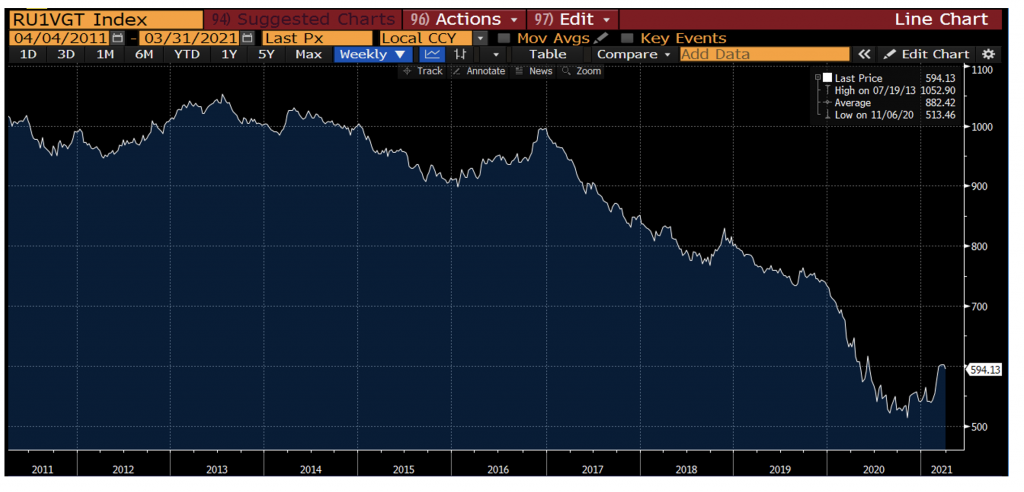
What is happening in growth vs value investing?
In the past we have commented several times on the relative performance of value vs growth investing, including this article from the middle of last year, which highlighted the miserable experience of traditional “value” investors in recent years, and the potential for a more positive experience going forward.
To quickly recap, the textbook definition of a value stock is one that trades on a below-average multiple of earnings, dividends, book value or some other fundamental metric, and a growth stock is the exact opposite. This provides a simple and elegant way of drawing a line through a group of stocks with half of them falling to each side. If we get into the details we might quibble about the correct categorisation of individual stocks, but at an aggregate level it is a definition that works well.
For quite some time now, investors who prefer to fish in the value pond have fared very poorly relative to growth investors. This can be seen in the performance of the Russell 1000 Value/Growth Total Return Index which measures the relative performance of value compared with growth for the companies in the Russell 1000 Index.
Source: Bloomberg
You can see the painful decline for value over many years, but interestingly, in the 2nd half of last year, the performance of value started to improve relative to growth. This has erased only a small part of the prior underperformance, and a relevant question for investors today is whether this might be a temporary blip, or the beginning of a more profound reversal of the previous underperformance.
As always, it is extremely difficult to forecast the behaviour of equity markets in the short term. However, for investors of a patient disposition, there are some useful observations that can be made about the longer-term outlook.
If we back up a step, there is a concept that lies at the heart of fundamental investing, which is that a good investment is one where it makes sense for a long-term owner to pay the asking price of an asset today in return for all the future cashflows to be delivered by that asset. This can be contrasted with trading, where a good trade is one where the asset can be sold tomorrow for a higher price than must be paid today.
A critical difference between investing and trading is that for investors there is a “right” price, or valuation, beyond which the investment cannot be justified, even if that valuation is sometimes hard to pin down. For traders, there is no such constraint, and when traders are in the ascendency, prices can move well beyond fundamental valuations.
There is no law that says that asset markets must ultimately answer to fundamental value, but as long as there is a class of investors who care about valuations, common sense suggests that prices must eventually gravitate towards those valuations. When traders lose confidence that they can sell for a higher price tomorrow, they stop buying, and fundamental buyers don’t step in to arrest the fall until prices return to attractive levels. Certainly, history suggests that something along these lines is what happens.
With this as a guiding principle, we can comment sensibly on the longer-term outlook for value vs growth investing by reference to fundamental valuations. On this topic, a lot has already been written by ourselves and others, including this example from last year on the Tesla share price. To give a very brief summary, at the growth end of the market we seem to have entered Crazytown, with market prices for things like Tesla and Afterpay going way beyond fundamentals, and clear signs of excess in SPACs, IPOs, Robinhood day traders and the entrepreneurial end of the crypto market.
In contrast, the value end of the equity market (and unsurprisingly after a very long stretch of underperformance) looks to be in much more reasonable shape in terms of underlying valuations.
Again, it’s hard to say much about the near-term direction of markets, but for those with a longer-term outlook, they conclusion is reasonably clear: with valuations at the growth end of the market looking stretched, it might pay to be a little wary of those stocks that have been big winners over the last 5 years or so, and look more closely at those that have been a little unloved.
